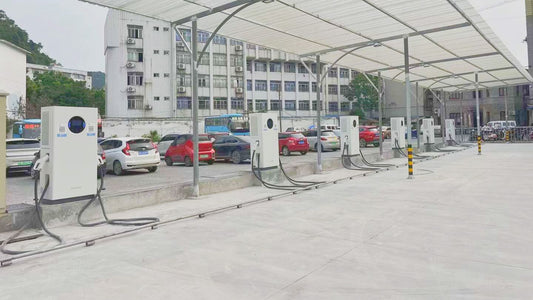If you're planning to buy an electric vehicle, you should know that you have already prepared for this. Preparing your home and garage for an electric vehicle (EV) involves several steps to ensure safety, convenience, and efficient charging. Here's a comprehensive guide:
Evaluate Your Electrical System
Determine if your home's electrical system can handle the additional load required for EV charging. Consult with a qualified electrician to assess your electrical panel's capacity and potential upgrades needed.
Install a Dedicated EV Charging Circuit
Consider installing a dedicated circuit for EV charging to prevent overloading existing circuits. A Level 2 EV charger typically requires a 240-volt circuit. Ensure the wiring and circuit breaker are suitable for the charger's amperage rating.
What are the requirements for installing an EV charger?
What should I know before installing an electric vehicle charger for my home?
Select the Right Charging Equipment
Choose an EV charging station that suits your needs. Factors to consider include charging speed, connectivity options, durability, and compatibility with your EV model.
Location of Charging Equipment
Decide where to install the EV charging station. It's commonly installed in the garage for convenience and weather protection. Ensure the location allows for easy access and doesn't interfere with other garage activities.
Weatherproofing
If your charging station will be installed outdoors or in a location exposed to the elements, ensure it's weatherproof and rated for outdoor use. Additionally, consider using cable management systems to protect charging cables from damage.
Consider Smart Charging Solutions
Explore smart charging options that allow you to remotely monitor and control charging sessions, schedule charging during off-peak hours for cost savings, and receive notifications about charging status.
Ensure Proper Ventilation
EV charging stations may generate heat during operation. Ensure adequate ventilation in the installation area to dissipate heat and prevent overheating of the charging equipment.
Provide Proper Lighting
Ensure adequate lighting in the charging area for safety and convenience, especially if charging at night or in dimly lit areas.
Safety Precautions
Follow all safety guidelines provided by the manufacturer during installation and use of the EV charging equipment. Consider installing ground fault circuit interrupters (GFCIs) for added protection against electrical hazards.
Consider Future Expansion
If you plan to purchase additional EVs or upgrade your current vehicle in the future, consider installing infrastructure capable of supporting multiple charging stations or higher charging capacities.
Educate Household Members
Ensure everyone in your household understands how to safely use the EV charging equipment and follow proper charging protocols.
Comply with Local Regulations
Check local building codes and regulations regarding EV charging installations to ensure compliance with safety and permitting requirements.
Choose a Charging Connector Type
Different EV models use different charging connector types. Common types include SAE J1772 (North America) and Type 2 (Europe). Ensure the charger you select is compatible with your EV's charging port.
By following these steps, you can effectively prepare your home and garage for an electric vehicle, ensuring safe and convenient charging for years to come.




